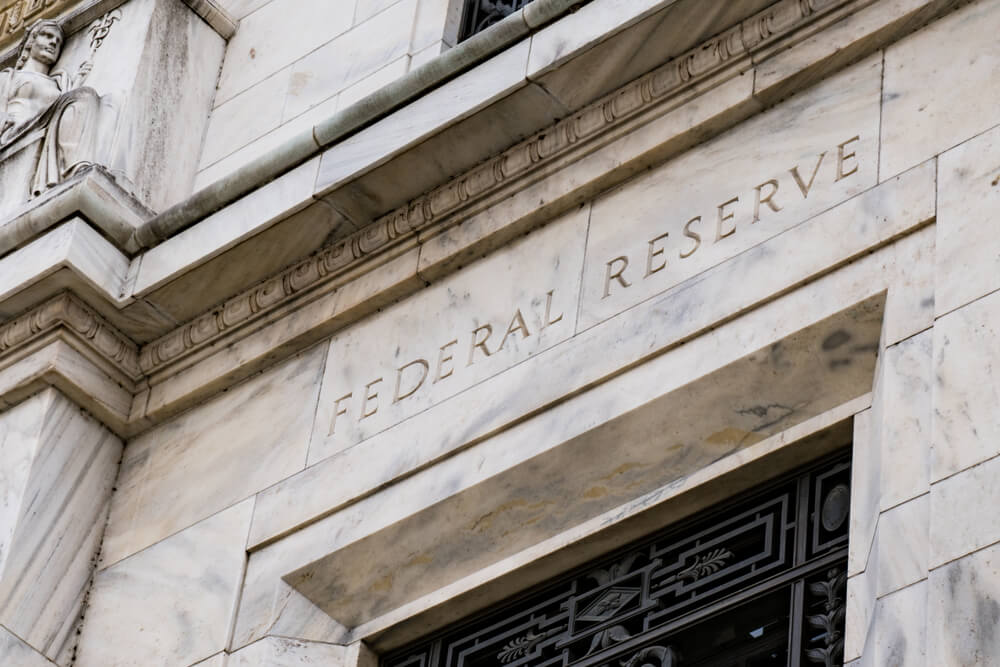The CIO of Wealth Management for UBS told Bloomberg in an interview Sunday that, contrary to popular opinion, the bank believes the Federal Reserve will actually pause its interest rate hike in December, which if true would be good news for investors in U.S. Treasuries.
The reason?
Tariffs and the ongoing and escalating trade war with China.
On Monday, the Trump administration put 10 percent tariffs on an additional $200 billion in Chinese goods, which escalate to 25 percent on Jan. 1. The hike leads UBS to believe this will cause the Fed to pause its planned rate hike.
“I think on the market side, people have pretty much acknowledged (the rate hike is coming),” Hartmut Issel said in an interview on Bloomberg TV. “I think what will be interesting to watch this week really is maybe some commentary from the Fed. I think we can assume the hike is a done deal but where we differ I would say from consensus a bit is the December hike.
“In December we think they’re going to pause. So we do expect already it in the run-up to the fourth quarter, and probably also in the first quarter, the data in the U.S. gets a little bit softer — probably also because of the very strong push-up elements in the tax cuts diminish a little bit. So it will be interesting.”
Issel went on to say when tariffs hit 25 percent, he expects it will slow both U.S. and China’s GDP, which hit 4.2 percent for the U.S. during the April-June quarter, the highest in nearly four years.
“But what we have calculated is that when the 25 percent hits, so the first of January, that’s really when we have to reshuffle the deck a bit on the estimates. So we have actually estimated that for the U.S. GDP, we have to deduct a little bit more. In fact, on the China side, for this 25 percent, we took both (GDPs) down because of the China stimulus that buffers it a bit (at first). So we will see. It will be an interesting equation … to watch the U.S. side and not only China these days.”
Issel said Monday’s tariffs play a role in delaying the next Fed rate hike, but it’s the Jan. 1 increase that will change the its thinking to stop a potential slowdown in investing.
“What we will see (Monday) plays a role, but it’s really this 25 percent over the next couple of weeks — especially after midterm elections — it doesn’t look like we’re going to move. What you would typically expect is some hesitance on the investment side. But we have both the consumption side and the investment side, the delta, compared to two weeks ago, we took both of them down. But especially the investment side in the U.S., we think that could slow a bit more than what people expect right now.”
UBS, a Swiss multinational bank and financial services company, also said as much in a late August post on the bank’s website:
But a pause in tightening still looks probable later in the year, a positive for investors in US Treasuries.
• Fed officials continue to highlight the risk that trade tensions could slow growth. The Fed warned that while trade worries had not so far undermined corporate investment and hiring, it could do so if the dispute is not resolved soon, inflicting “significant negative effects on economic growth.” And implementation of tariffs on USD 200bn of Chinese imports to the US is still pending.
• The recent acceleration in inflation, with the consumer price index hitting 2.9% in July, has largely been caused by higher energy prices and base effects. As the summer peak passes, it will become easier to justify a rate pause in the fourth quarter.
• The flattening yield curve may also act as a brake on rate rises. The gap between two- and 10-year yields dropped to a decade low of 22 basis points earlier this week. That made at least one rate-setter nervous. Atlanta Fed President Bostic said he wouldn’t vote for anything that would lead to an inverted yield curve – which has often presaged recession.So, we see no signs of a more hawkish Fed. We remain overweight 10-year US Treasuries, which we believe have largely priced in a full rate hiking cycle already.
